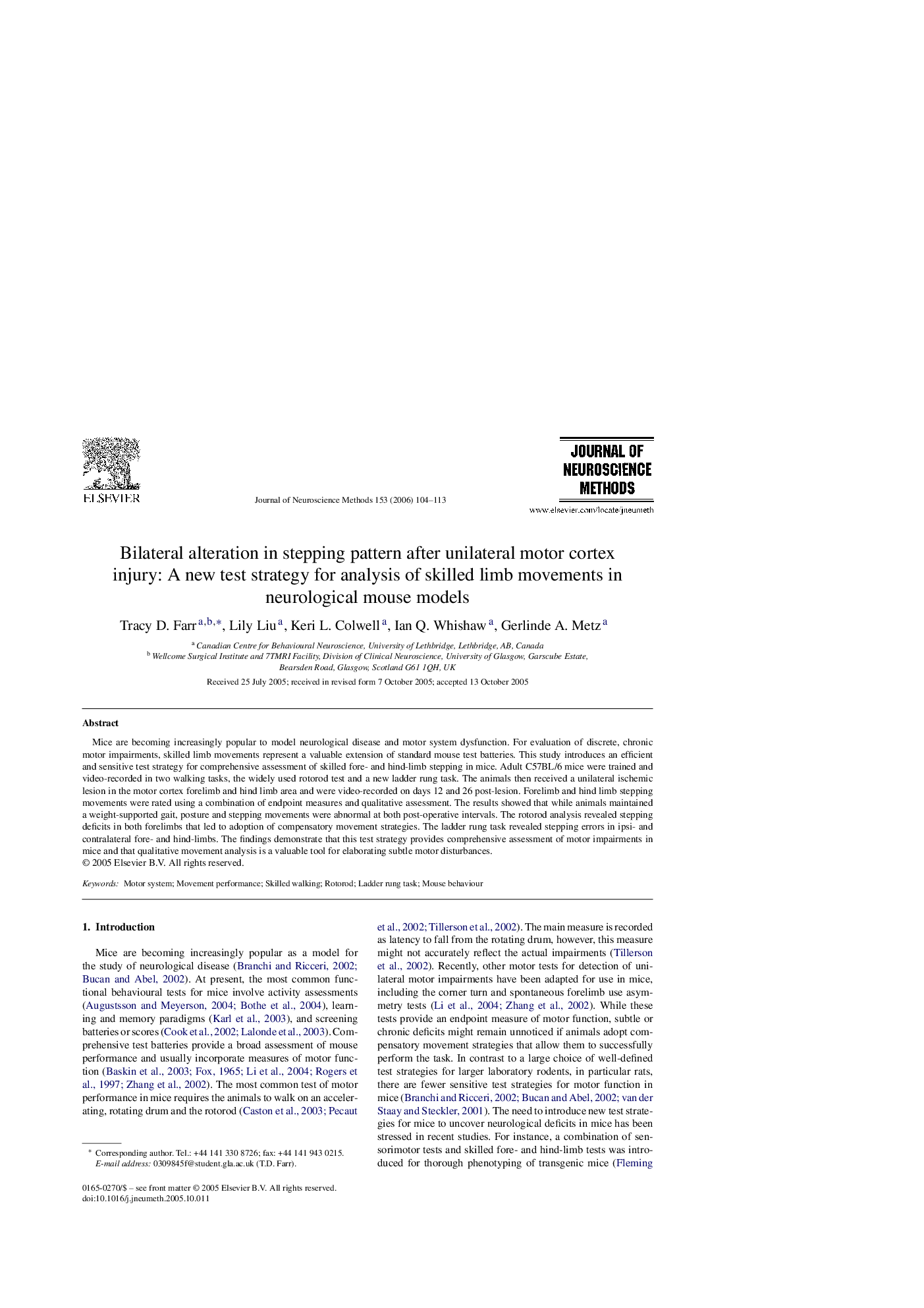| Article ID | Journal | Published Year | Pages | File Type |
|---|---|---|---|---|
| 4337168 | Journal of Neuroscience Methods | 2006 | 10 Pages |
Abstract
Mice are becoming increasingly popular to model neurological disease and motor system dysfunction. For evaluation of discrete, chronic motor impairments, skilled limb movements represent a valuable extension of standard mouse test batteries. This study introduces an efficient and sensitive test strategy for comprehensive assessment of skilled fore- and hind-limb stepping in mice. Adult C57BL/6 mice were trained and video-recorded in two walking tasks, the widely used rotorod test and a new ladder rung task. The animals then received a unilateral ischemic lesion in the motor cortex forelimb and hind limb area and were video-recorded on days 12 and 26 post-lesion. Forelimb and hind limb stepping movements were rated using a combination of endpoint measures and qualitative assessment. The results showed that while animals maintained a weight-supported gait, posture and stepping movements were abnormal at both post-operative intervals. The rotorod analysis revealed stepping deficits in both forelimbs that led to adoption of compensatory movement strategies. The ladder rung task revealed stepping errors in ipsi- and contralateral fore- and hind-limbs. The findings demonstrate that this test strategy provides comprehensive assessment of motor impairments in mice and that qualitative movement analysis is a valuable tool for elaborating subtle motor disturbances.
Related Topics
Life Sciences
Neuroscience
Neuroscience (General)
Authors
Tracy D. Farr, Lily Liu, Keri L. Colwell, Ian Q. Whishaw, Gerlinde A. Metz,
